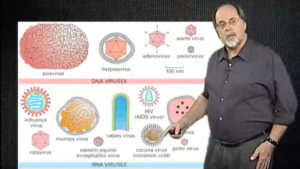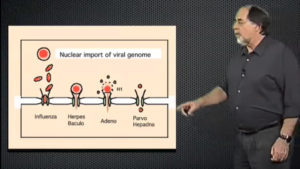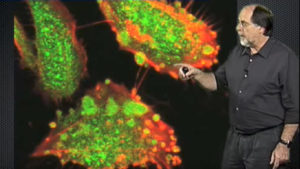Ari Helenius is from Finland where he studied Biochemistry in the University of Helsinki. During his PhD thesis work, which focussed on the analysis of membrane proteins, he and his colleagues started to work on the biochemical properties of enveloped animal viruses.
The simplicity and elegance of Semliki Forest virus and its membrane proved to be of great advantage in the analysis of basic membrane phenomena. Later while working as a staff scientist in the European Molecular Biology Laboratory (EMBL) in Heidelberg, Germany, his work turned to the problem of virus cell interaction and virus entry. He and his colleagues demonstrated that many animal viruses enter cells by clathrin-mediated endocytosis, and that they possess spike glycoproteins with acid-activated membrane fusion activity.This allows their escape from endosomes.
Over the years as a Professor at Yale University Medical School and more recently in ETH Zurich, he and his group have continued to work on viruses and cells. In addition they have addressed basic cell biological questions such as protein folding in living cells, quality control, and secretion.







